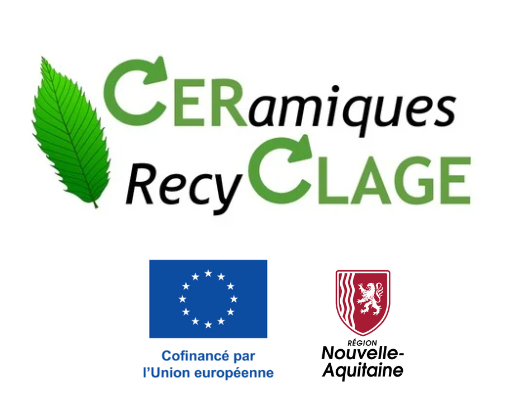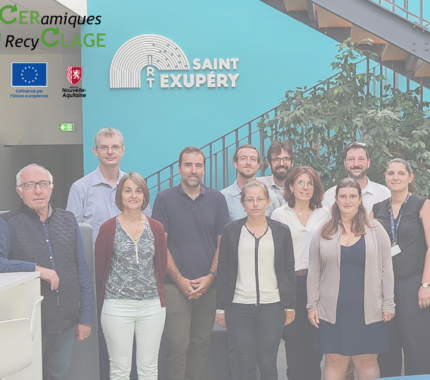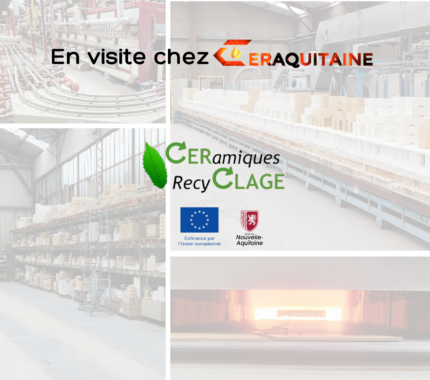🍃 CERCLAGE. ♻️

16 Oct 24
Collaboration
The Cerclage Project: Recycling ceramic production waste to give it a second life.
We are pleased to announce the launch of an ambitious project aimed at meeting environmental challenges in the field of technical ceramics.
The Cerclage (CERamiques & RecyCLAGE) project, for which the CTTC is the lead partner, is a collaborative initiative. Its main objective is to identify and qualify ways of recycling ceramic production waste, while measuring their environmental impact in order to select the most virtuous route.
Environmental context and issues
Environmental concerns are becoming increasingly important in today's society and are becoming major priorities.
We know that in the field of technical ceramics, materials are perceived as resistant and durable. However, ceramic shaping processes generate rejects during production and become waste at the end of their life. Given the urgency of climate change and the political decisions to reduce the carbon footprint of human activities in the long term, the management of this scrap/waste is an issue that needs to be addressed.
The Cerclage project is part of this dynamic and aims not only to identify ways of recovering these scraps and waste, but also to assess the ecological relevance of recycling them. How can we reintegrate these sintered and non-compliant ceramics into industrial processes? What is the quality of the secondary materials after reprocessing? Can they be used in other forming processes? These are just some of the questions that the Cerclage project will help to answer, with a focus on the carbon impact involved.
Objectives of the Cerclage project
This project is based on two main pillars:
- Recovery of ceramic scrap: the project aims to identify the various recycling routes. This includes reusing sintering scrap in production processes or redirecting it to other industries.
- Environmental impact assessment: the project will quantify the environmental impact of recycling routes. Using detailed analyses, the consortium will assess the carbon footprint and environmental costs of recycling technical ceramics. This approach will help to answer the key question of this project: is recycling technical ceramics a better solution, or does it generate more CO2 than using native raw materials?
The consortium: local and complementary players
The Cerclage project involves a consortium of six players in the Nouvelle-Aquitaine region.
Centre de Trnsfert de Technologies Céramiques: CTTC is the project leader. It is responsible for the overall coordination of the project and contributes its expertise in technical ceramics and its technological R&D capabilities.
APESA :Révélateur de Solutions Durables, APESA is a methodological transfer centre focusing on sustainable development. Its role in the Cerclage project is to support the partners in assessing the environmental impact of the processes studied.
IRT AESE - Saint Exupéry: This technology research foundation provides expertise in managing complex industrial processes and integrating new technologies into production chains.
GALTENCO SOLUTIONS: GALTENCO SOLUTIONS is an innovative company specialising in technical solutions for materials processing, including ceramics. Its role in the project will be to evaluate new uses for scrap materials after reprocessing.
TELLUS-CERA: A key player in the design and production of technical ceramic refractory bricks, providing valuable knowledge of materials and their behaviour in high-temperature applications.
CERAQUITAINE: A company specialising in the production of ceramics for the heat industry, CERAQUITAINE will validate the secondary materials by assessing their viability under real industrial conditions.
An ambitious project
The Cerclage project has a budget of €1.16 million. It is co-financed by the European Union and financially supported by the Nouvelle-Aquitaine region. Over a 3-year period, the partners will pool their resources to achieve the objectives set. This investment underlines the importance of the circular economy in the region's strategy to reduce industrial waste and promote sustainable solutions for the ceramics sector.
Towards more sustainable ceramics?
This project will represent a step towards a more environmentally-friendly ceramics industry. This reflection on the management of scrap and waste, on the CO2 emissions generated by recycling processes, but also on the possibility of their reuse in new processes opens up a number of promising prospects for a greener, more committed future.
By aiming for a circular economy in the long term, this project will enable us to reflect on production methods and integrate recycling into the design of ceramic products.
The expectations of such a project will be beneficial not only for those involved in the ceramics sector, but also for industrial players who could draw inspiration from the project for their own recycling processes.
Thank you
The consortium would like to warmly thank the European Union and the Nouvelle-Aquitaine Region for their confidence and financial support. Without this support, a project of this scale would be difficult to carry out.
Together we hope to reduce ceramic waste and lay the foundations for a more sustainable industry in the future.

